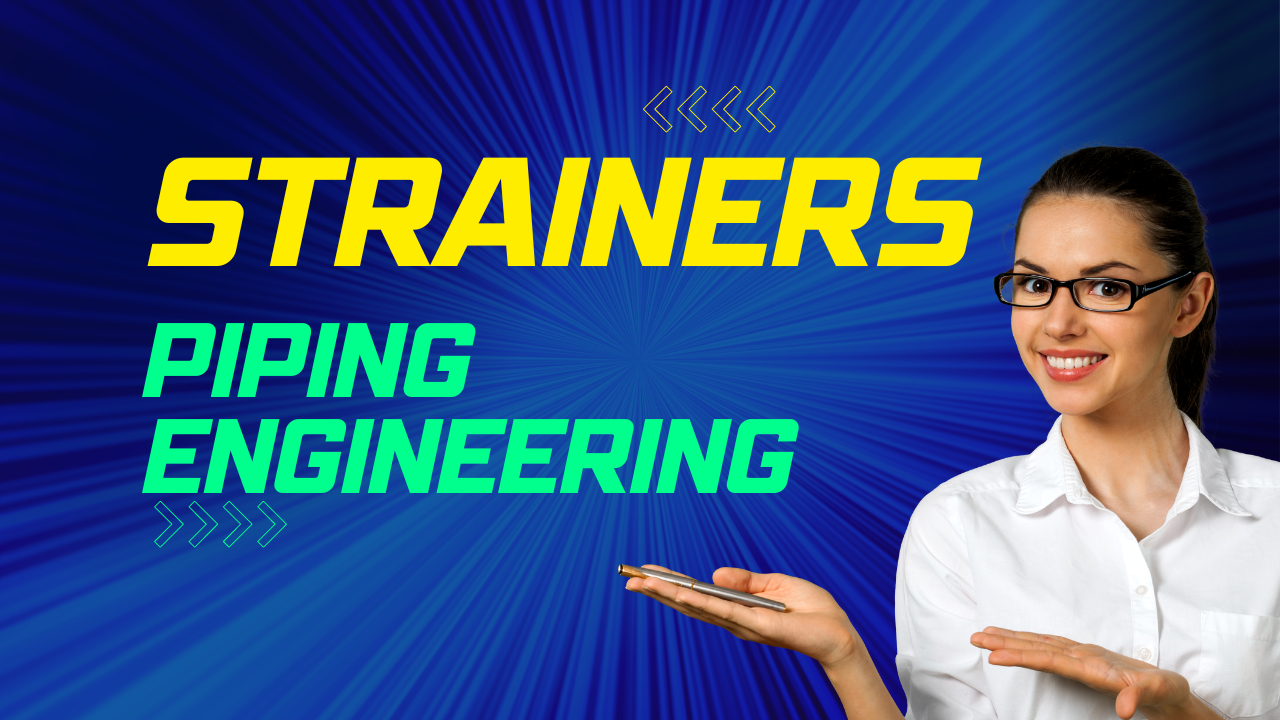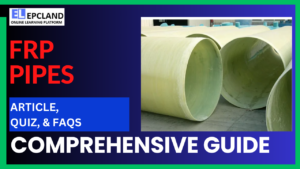Introduction:
In the realm of piping engineering, maintaining fluid quality and safeguarding system integrity are paramount. Enter strainers – unassuming yet vital components that play a pivotal role in ensuring smooth operations. Strainers, much like a filter in a coffee maker, sieve out unwanted debris from fluid streams, preventing equipment damage and process disruptions. This article dives deep into the world of strainers in piping engineering, providing insights into their types, functions, installation, and maintenance. Check out the details for Flame Arrestors here.
Table of Contents
Strainers in Piping Engineering
Strainers, often referred to as filters, are devices used to strain out solids and particles from liquids and gases as they flow through pipelines. Their primary function is to protect downstream equipment, such as pumps, valves, and meters, from potential damage caused by debris, dirt, or foreign matter. Strainers are strategically placed within piping systems to ensure the purity and integrity of fluids, thus maintaining the efficiency of industrial processes.
Don’t miss the Complete Course on Piping Engineering: Check Now
By EPCLand.com
Types of Strainers
Strainers come in various types, each designed to suit specific application needs. Common types include:
- Y-Type Strainers: These strainers resemble the letter “Y” and are ideal for removing large particulates. Their design allows for easy cleaning and maintenance.
- Basket Strainers: Basket strainers feature a basket-like structure that captures debris. They are often used for fine filtration in industrial settings.
- Duplex Strainers: Designed for continuous operations, duplex strainers have dual chambers, allowing one side to be cleaned while the other remains operational.
- T-Type Strainers: Shaped like the letter “T,” these strainers are preferred for applications requiring minimal pressure drop.
- Temporary Strainers: Used during commissioning or maintenance, temporary strainers prevent debris from entering the system but are not meant for long-term use.
Functions and Importance
Strainers serve several crucial functions in piping systems:
- Debris Removal: Strainers prevent particles from clogging downstream equipment, safeguarding against performance degradation.
- Equipment Protection: By filtering out debris, strainers extend the lifespan of pumps, valves, and other equipment, reducing maintenance costs.
- Quality Assurance: Strainers ensure the purity of fluids, vital in industries like food, pharmaceuticals, and chemicals, where product quality is paramount.
Installation Guidelines
Proper installation of strainers is imperative to maximize their effectiveness:
- Strainer Positioning: Place strainers upstream of sensitive equipment to ensure debris is captured before it can cause damage.
- Orientation: Install strainers with proper orientation, considering fluid flow direction and pressure drop.
- Bypass Arrangements: Incorporate bypass lines to ensure uninterrupted operations during strainer maintenance.
- Sizing: Choose the right strainer size based on flow rate, pipe diameter, and particle size to avoid excessive pressure drop.
Strainers in Piping Engineering: FAQs
Q: How often should strainers be cleaned? A: Cleaning frequency depends on factors such as fluid type and contamination levels. Regular inspection is recommended, and cleaning can vary from weekly to yearly.
Q: Can strainers be installed vertically? A: Yes, strainers can be installed vertically or horizontally. The choice depends on space availability, flow characteristics, and maintenance convenience.
Q: What’s the difference between filtration and straining? A: Filtration typically involves finer particle removal using media like screens or membranes. Straining focuses on larger debris removal and is often done using perforated or mesh screens.
Q: Are automatic self-cleaning strainers available? A: Yes, automatic self-cleaning strainers use mechanisms like backwashing to remove debris without manual intervention, ensuring continuous operation.
Q: Can strainers handle high-pressure applications? A: Yes, strainers can be designed to handle high-pressure applications, but their design and material selection should align with the specific requirements.
Q: Are there strainers for corrosive fluids? A: Yes, specialized materials like stainless steel or corrosion-resistant alloys can be used to construct strainers for handling corrosive fluids.
Conclusion: Filtering Excellence for Efficiency
Strainers in piping engineering are the unsung heroes that ensure the smooth functioning of industrial processes. Their ability to filter out debris and unwanted particles safeguards equipment, maintains fluid quality, and enhances overall system efficiency. With various types catering to different needs, proper installation, maintenance, and adherence to guidelines become paramount for their optimal performance. As you delve into the world of strainers, remember their significance in keeping industrial systems flowing seamlessly.
Recommended courses (Published on EPCLand):
- Basics of Piping Engineering
- Piping Layout Engineering
- Piping Material Engineering
- Piping Stress Analysis
- Complete Course on Piping Engineering
- Material Requisitions
- Piping Material Specifications
- Valve Material Specifications
Related Video
Attempt Quiz
Question 1:
What is the primary purpose of using a strainer in piping systems?
Explanation: The primary purpose of using a strainer in piping systems is to remove solid particles, debris, and foreign objects from the fluid to prevent damage to downstream equipment and maintain system efficiency.
Question 2:
Which of the following types of strainer uses a perforated or mesh screen to filter particles?
Explanation: A Basket Strainer uses a perforated or mesh screen to filter particles from the fluid. Y-Strainers, Duplex Strainers, and Temporary Strainers are other types used for different applications.
Question 3:
Which type of strainer is commonly used for applications requiring uninterrupted flow during maintenance?
Explanation: A Duplex Strainer is commonly used for applications requiring uninterrupted flow during maintenance. It has two separate chambers, allowing one to be in use while the other is cleaned or serviced.
Question 4:
What is the purpose of a Temporary Strainer in piping systems?
Explanation: A Temporary Strainer is used to remove large debris and particles during construction, commissioning, or maintenance activities. It is often installed temporarily and replaced with a more permanent strainer once the system is operational.
Question 5:
What material is commonly used for the construction of strainer bodies?
Explanation: Cast Iron or Stainless Steel are commonly used materials for the construction of strainer bodies due to their durability, corrosion resistance, and compatibility with various fluids and operating conditions.



